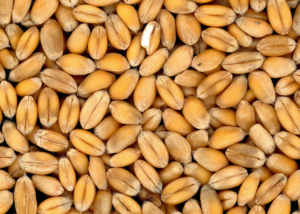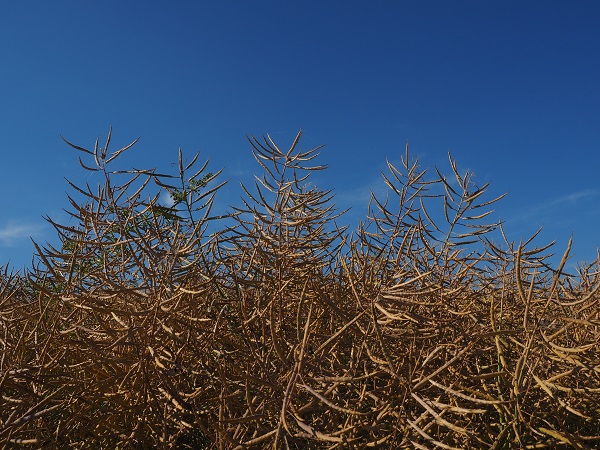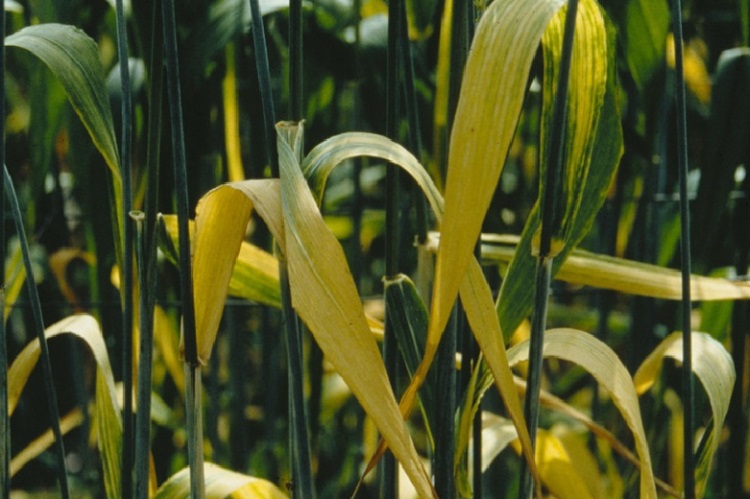Crop Health Updates - Aug 2019
General Comments
Heat and water should be good for promoting bumper yields – but the reality of juggling harvest activity with heavy downpours is rather less idyllic. The winter barley harvest is well underway in most areas and reports on yield so far are pretty good. A small start has been made on rape harvesting but it is too early to tell whether yields are above or below average. Wheat and spring barley crops have a bit to go but look promising – there are a few reports of wheat going off a bit too rapidly in the hear but mostly crops look well. A few barley crops in the central region have areas of lodging after heavy rain.
With all the pressures on pesticides and with resistance issues, the untreated yield and disease scores of varieties are increasing in interest. Varieties that are more resilient are a key component of an IPM strategy. Forward planning also helps pick out the best win: wins in reducing pest, weed and disease risks and lets factors such as rotation and drilling date be tuned to best effect, as well as helping to prioritise treatment needs for fields at risk of issues like slug damage.
Blight proves challenging in 2019
At SRUC’s potato blight trial site this year blight has proven to be particularly difficult to control since the start of August. Of course, the weather has been highly favourable for blight, with prolonged high-risk conditions which combine warm temperatures and with high relative humidity. Read more here.
Harvested Crops
Ensuring stores are clean and free of pests is essential to prevent any problems after all the hard work of growing and harvesting the crop. Bear in mind that no pests of grain come in from the field - they are all loitering in the store or on associated machinery, trailers, pits, ducts just waiting for grain to arrive. They keep themselves ticking over on spilled grain, which can be found in crevices, on ledges, in pits and ducts. Read more here.
Summary of Winter Barley Varieties 2019
Using more resilient varieties is one of the most effective ways of reducing disease risk. There is increasing interest in looking at untreated yields of varieties in trials and looking at the disease ratings. There are some good advances in treated yields and that is still a strong driver in picking varieties – but looking at the yield loss when untreated is always useful. Read more here.
Summary of Winter Wheat Varieties 2019
When making variety choices check for the best balance of disease resistance, maturity, straw stiffness and grain quality. Many varieties in trials in the south-east of Scotland and north of England have been infected with yellow rust, even those with a resistance rating of 8 or 9. Changes in disease resistance ratings are likely as the UK Cereal Pathogen Virulence Survey and the AHDB compile new data from harvest 2019. Read more here.
Winter Oilseed Rape - Harvest management
Swathing can have a place in exposed sites so long as it is not a wet field. The optimal timing for swathing is when the colour of seed is green to green-brown in the top pods, mainly red-brown in the middle pods and dark-brown in the bottom pods. AHDB trials have shown that mistimed swathing can significantly reduce oil content. Make sure the swather is cleaned and free of grass weed seed contamination – swathers have been known to spread problem grass weeds. Read more here.
Spring Peas and Beans - Pre-harvest desiccation options
Due to the indeterminate nature of combining peas, most combining pea crops in Scotland benefit from desiccation, unless it is an exceptionally dry harvest. Field beans for animal feed can be treated pre-harvest for control of most grasses and broad-leaved weeds with many glyphosate products. Read more here.
Slug Management
Slug trapping can be used now to assess the risk from slugs in a particular field. To get the best from slug trapping the bait placed under the trap needs to grab the slugs’ interest and to keep them there. The best bait is a dry food bait such as the breakfast cereal ‘Alpen’ or similar, or chicken feed (layers mash). Do not use slug pellets as bait. A tablespoon of the bait should be placed under the trap, which can be a slate, fertiliser bag, slug mat, an upturned flower pot base, wooden board or something similar. Read more here.
Barley Yellow Dwarf Virus - forward planning
Barley yellow dwarf virus (BYDV) has been seen in many winter and spring cereals this season. Aphids had built up numbers in crops and volunteers, however, the heavy downpours of rain will have washed many off. There is still risk of cereal aphids picking up BYDV from infected plants and spreading the virus to cereals being sown this autumn. Read more here.
Winter Oilseed Rape - Pest Management
The key pests to consider in winter oilseed rape this autumn are flea beetle, cabbage stem flea beetle, peach-potato aphid (and turnip yellows virus - TuYV) and later in the autumn rape winter stem weevil. Read more here.
Winter Oilseed Rape - Clubroot management
Clubroot is a major issue in rape in our arable rotations with over 50% of fields used for rape carrying the disease – and in areas like Aberdeenshire, the incidence is higher with the majority of fields affected. Read more here.
Winter Oilseed Rape - Weed Management
In ideal conditions where the soil is warm and moist, seed well covered by soil and a low risk of crop failure, then pre-emergence weed control is the most cost-effective option, especially for annual meadow-grass and for some of the more problematic weeds such as shepherd’s purse and cranesbill. It seems likely that pre-emergence treatments could work well this season. The crop must be treated within 48 hours of sowing. Read more here.
Sign up to the FAS newsletter
Receive updates on news, events and publications from Scotland’s Farm Advisory Service











